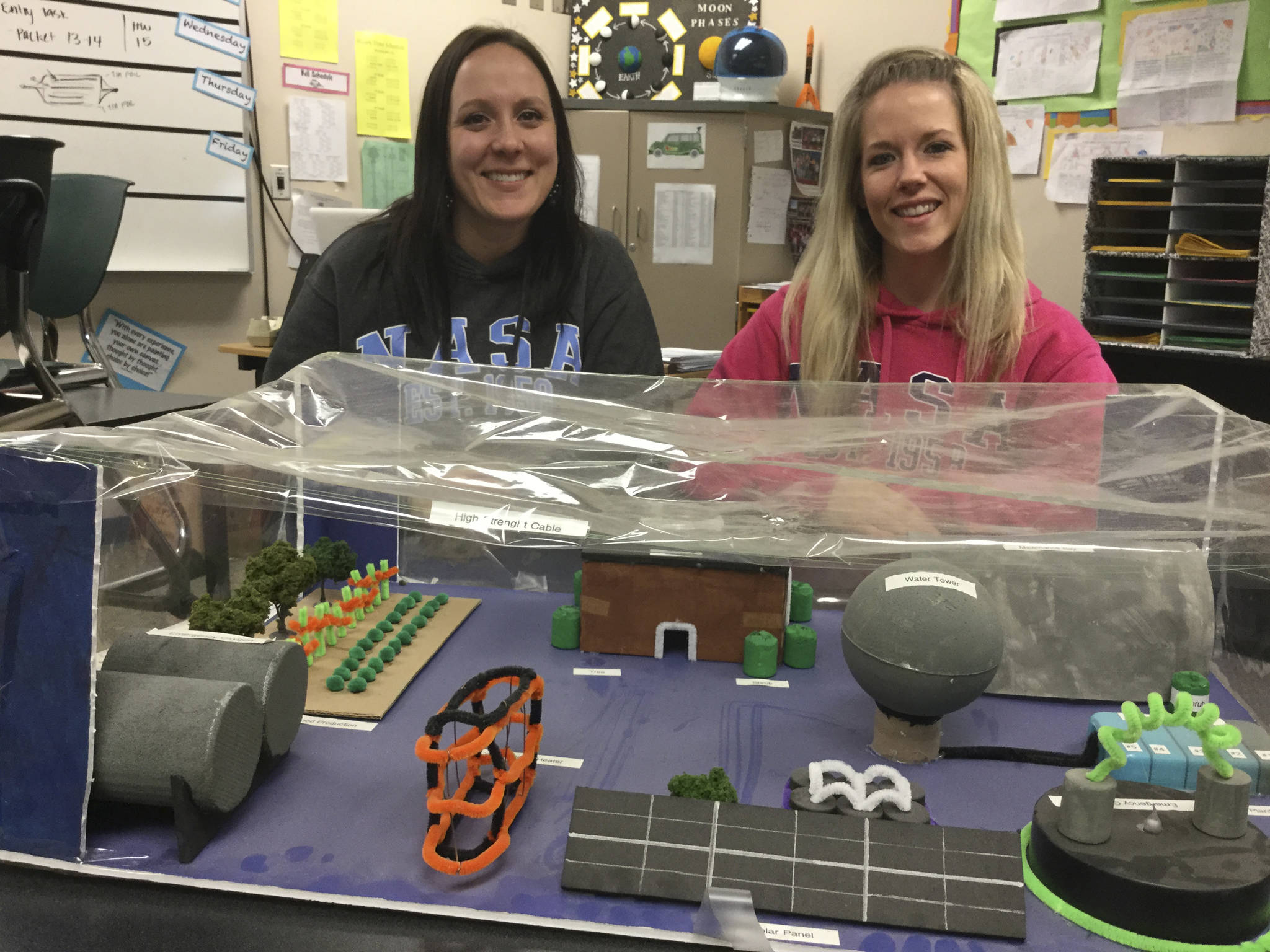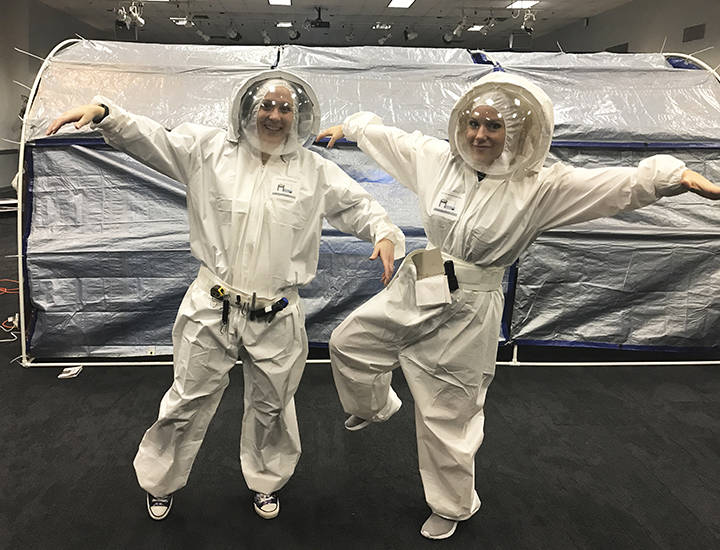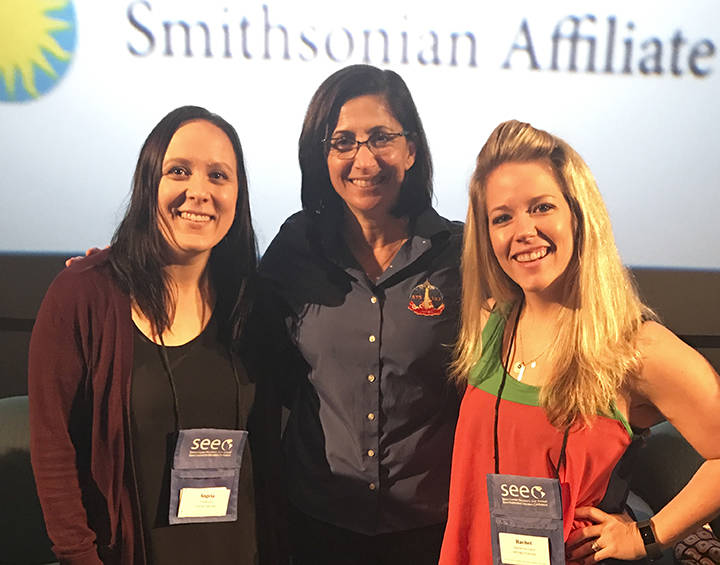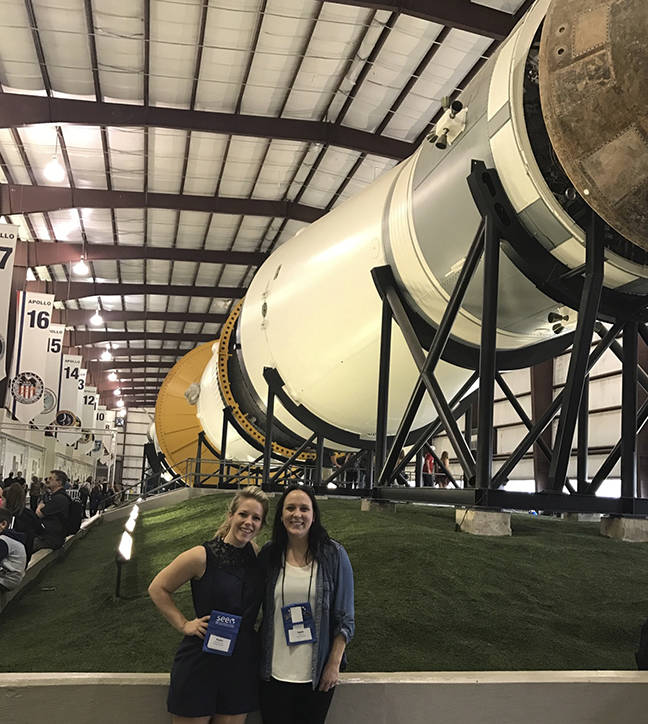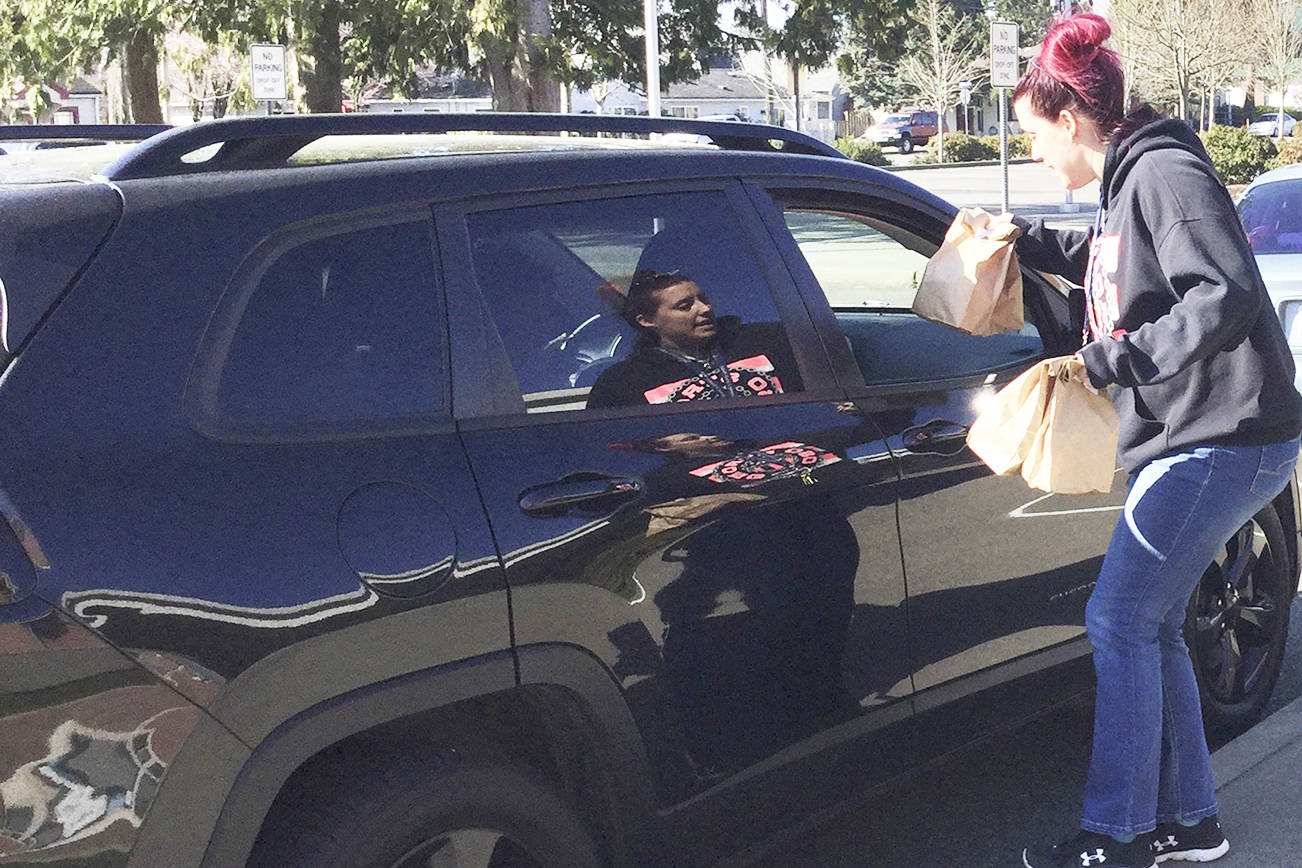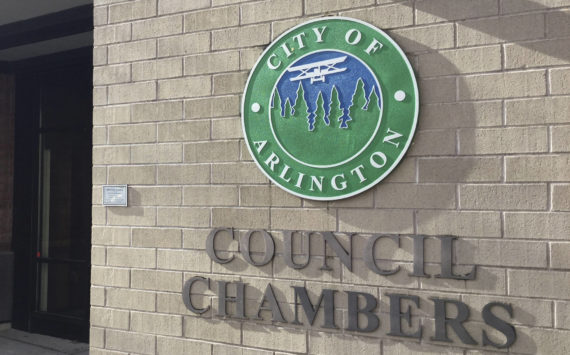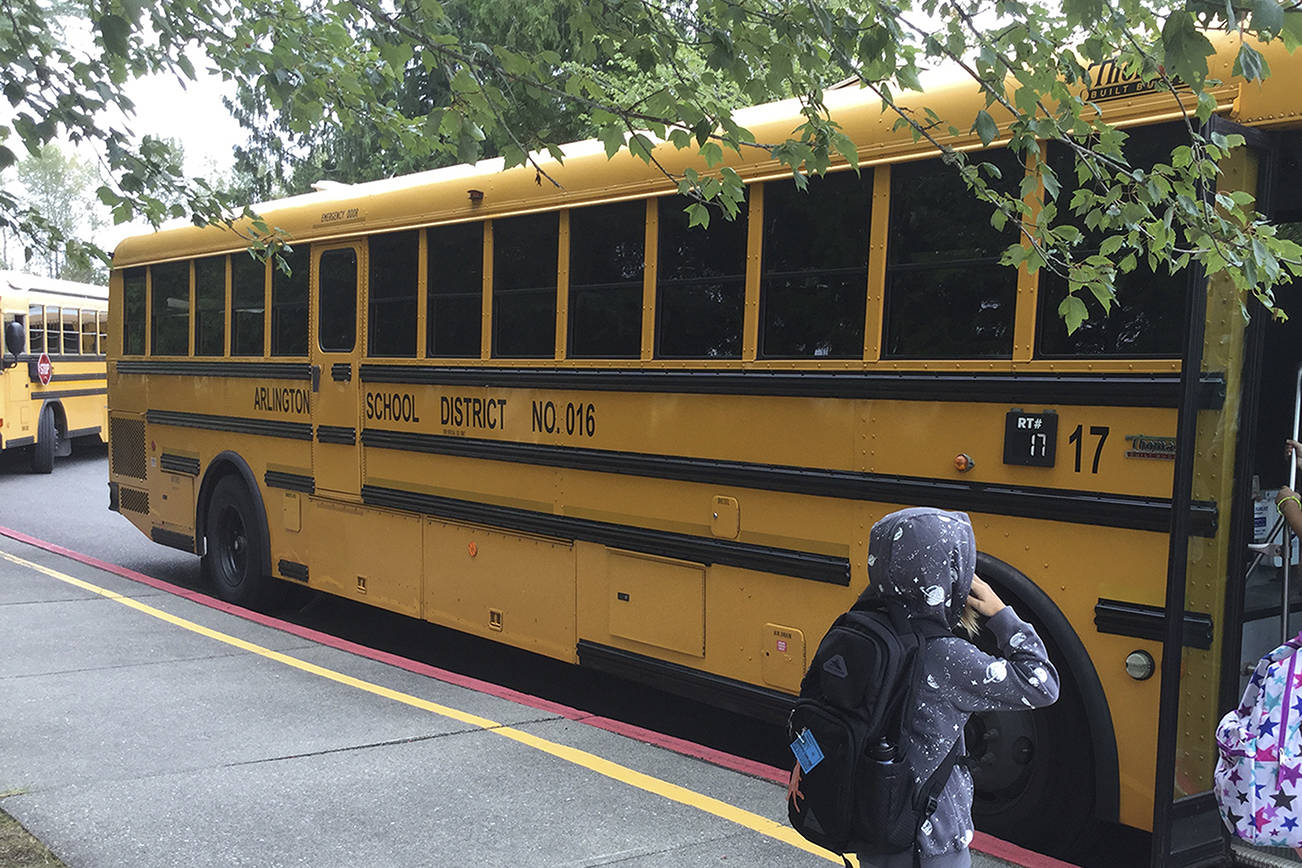ARLINGTON – Instructors use some fun ways to teach Earth-based sciences that bring out the natural curiosity in students.
But take those same fields of inquiry into orbit, then let student groups build a tabletop Mars colony project, and their imagination takes flight. After all, the basic science principles are the same whether you apply and test them here on terra firma, or in space. Space is just – pun intended – cooler.
Two Arlington science teachers are over the moon after attending the Space Exploration Educators Conference at Houston Space Center. They returned with a galaxy of ideas sure to inspire the next generation of scientists and engineers among their students.
Rachel Harrington, sixth-grade science and seventh-grade math teacher at Haller Middle School, and Angie Kyle, a seventh- and eighth-grade STEM teacher at Post Middle School, said the resources they gained were amazing.
“It ignites the passion you had when you were a first-year teacher, and that’s enough to move mountains with these kids,” Harrington said. “You’re excited and thrilled to bring this back and inspire kids to do something bigger than their wildest dreams.”
Moreover, she added, “You’re surrounded by other like-minded educators who also want to inspire future leaders.”
Educators from around the globe participated in the annual event at NASA’s Johnson Space Center and Space Center Houston for three days in February. The conference welcomed teachers from 41 states and nine countries, including Canada, India, Japan and the Philippines.
The conference included seminars, hands-on activities, tours and guest speakers. The hosts used space exploration initiatives and the latest information about the International Space Program to boost teachers’ skills in presenting science, technology, engineering and math, or STEM, lessons, in ways that inspire students.
Both Kyle and Harrington have found over time that whenever space science is part of the lesson plan, it gets the students’ attention.
“All the science conducted on the International Space Station connects to all the science we do in middle school, whether growing plants or looking at the impacts of how human systems respond in different environments,” Kyle said.
Before Kyle left for the conference to be a “pretend astronaut,” the class talked about getting a greenhouse. Classroom budgets being tight, she encouraged students to come up with their own proposal. When she returned, the students came up with three inexpensive proposals that used PVC pipe and tarps – they just might have a greenhouse before the school-year ends.
For both teachers, this was their first trip the Houston Space Center, but Harrington attended a Honeywell space conference a couple of years ago.
While at the conference, they saw Historic Mission Control Center as well as the space station’s flight control room, including stories of what happened during the Apollo days. They also touched moon rocks. Space Center Houston has the world’s largest collection for public view, and more than 400 space artifacts. Their teacher team also successfully designed a Mars rover with mouse traps.
They took their turn in the Neutral Buoyancy Lab, an astronaut training facility operated by NASA near the Johnson Space Center. Their team performed simulated tasks in preparation for an upcoming mission, wearing suits designed to provide neutral buoyancy to simulate the microgravity that astronauts feel during space flight.
A highlight of the visit was meeting astronaut Nicole Stott, a keynote speaker who talked about art in space education. Stott said when growing up nobody told her she could be an astronaut. She went ahead and did it anyway, becoming an engineer first.
Matt Green, James Webb Space Telescope senior staff project scientist, gave a mind-bending presentation on the design and construction of the scope scheduled for completion in 2018. The telescope is expected to see galaxies formed 13.5 billion years ago, at the point when stars and galaxies began to form.
While in Houston, they were able to meet with the planning lead on the NASA Orion Mission, the next generation spacecraft that will carry astronauts to an asteroid, Mars and eventually deep space. Harrington had arranged for her students previously to talk with that person via Skype. She had time to meet with Harrington and Kyle at the conference, but was on her way to meet with the European Space Agency about the project.
A challenging workshop that Harrington and Kyle attended was one that involved working to design a “heat shield” from common materials. This was an activity the teachers were able to bring back as a classroom assignment, using materials to protect an egg from a blow torch.
The teachers have more experiments in store. For example, studying slingshot maneuvers around a planet, using magnets to mimic gravity. Designing a better space toilet, and creating a urine purification system to make the fluid potable.
“Kids love gross-out science,” Kyle said, jokingly.
Growing tomatoes from seeds and observing their growth to learn more about photosynthesis is a common science project. Add a few seeds in the mix that took a ride in the International Space Station and study the differences – now that’s a science project.
“The students won’t know which of their seeds are more earthly and which are from the space station until they start observing them once they are planted,” Harrington said.
That’s the fun of inquiry for the students. They need to report back to the program the effects of space on plants.
Harrington likes to remind students that learning never ends.
“I tell them that you need to do it for yourself, always personally and professionally,” she said. “I am constantly searching for ways to grow myself. They should be doing that every day, too, outside the confines of these four walls and fifty-three minutes.”
